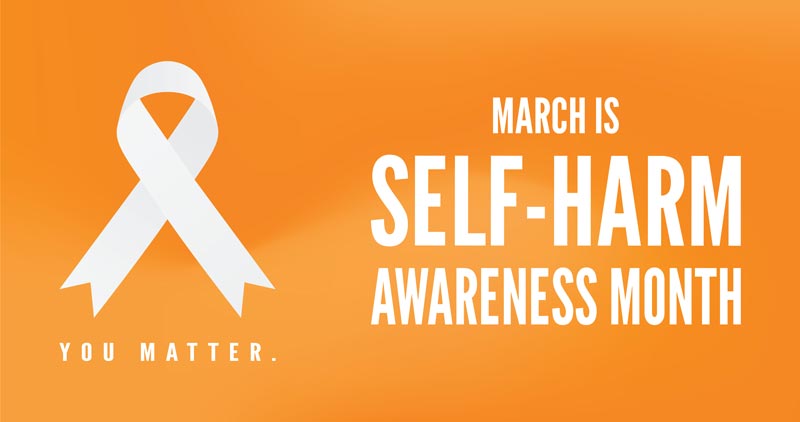What Is Gaslighting?
You’ve heard of Gaslighting, but what is it, really? How do you know when it’s happening, and what can you do about it? We’re shining a light on gaslighting, its Hollywood origins, and its sneaky red flags in our blog today. (TW: Mentions of abuse and trauma)
“I never said that.”
“That never happened.”
“You’re making a big deal out of nothing.”
“Why are you always ruining a good time?”
“It wasn’t that bad.”
“You’re making things up.”
If you’ve ever heard any of these phrases, you know the complex feelings they can bring up. You might question your own memory, or second-guess your reaction, or feel badly about something.
We call that Gaslighting.
You’ve probably heard that term before—it’s become a bit of a buzzword in the 2020s. And you’ve probably experienced it on some level, whether in the past or in your present life.
But what is it, really?
Gaslighting is an insidious form of abuse that harms mental health with lasting effects, sometimes even years later, according to experts. It can also be hard to spot or describe, making it an especially dangerous form of manipulation. Gaslighting’s very nature is to make you question what’s really happening. No wonder it’s hard for victims to talk about it with friends, family, or trusted people in their support network.
Why Gaslighting?
The term “gaslighting” actually comes from a 1938 play by Patrick Hamilton, adapted for Hollywood in the 1944 thriller Gaslight starring Ingrid Bergman. It’s the unsettling story of Paula, an increasingly paranoid newlywed who swears she’s losing her mind.
Spoiler alert: it’s not. Her new husband Gregory is behind the whole thing.
Gregory wants access to Paula’s family jewels and fortune, and has decided to drive his wife to the depths of madness in order to get them. He begins by switching the gas lights around their property on and off. When Paula tells him she’s sure someone is tampering with the lights, he convinces her that it’s all in her head.
Of course, the manipulation doesn’t end there; Gregory begins hiding her belongings or moving them to different locations. She’s rattled and upset. He maintains his façade of innocence and insists his wife is “losing her mind.” Eventually, she believes him.
Under the surface manipulation, Gregory also ensures that his wife has no support. He disrupts her relationships with friends and associates. He slowly isolates her from her networks, and she becomes reliant on his description of reality.
While this movie had all the fantastical makings of a blockbuster hit, its design was—and is—searingly accurate for too many.
Like Paula, when gaslighting victims feel that their version of reality is being challenged or ignored, they can experience paranoia, loss of confidence, and self-doubt.
How Gaslighting Works
Gaslighting can happen to anyone. It crosses socio-economic boundaries and can exist within any type of relationship, including spouses, coworkers, families, and friendships.
Gaslighting describes any dynamic where the victim feels that they must rely upon the gaslighter to tell them what is real. It strips the victim of agency and the ability to discern their feelings, thoughts, and emotions.
Gaslighting can be hard to identify, as it often begins in tiny, subtle ways, and can build over a period of many years. However, there are a few hallmarks of gaslighting in a relationship.
The “Red Flags” of Gaslighting
Trivializing Feelings
Gaslighters often insist that a victim’s feelings are trivial or overblown. A gaslighter might say, “Relax. You’re being too sensitive,” or “That shouldn’t hurt your feelings” when confronted with a behavior.
Victims may ask themselves, “Am I taking this too hard?” or “Was it really that bad?” Introducing self-doubt allows the gaslighter to assert more control and continue or escalate the behavior.
Here’s a quick scenario: Kathy’s boss, Steve, makes her the subject of a hurtful joke. Kathy insists on accountability from Steve, but he blows her off and says he was “just joking.” Kathy might feel that she should “lighten up,” even though she feels offended and emotionally wounded.
Blame-Shifting
Blame-shifting allows gaslighters to place the onus of apologies, behaviors, and boundaries onto others. For example, if Rick asks his sister Christy to apologize for something hurtful she said, she might blame-shift by insisting that Rick did something that frustrated her, therefore it was HIS fault that SHE said something hurtful.
Or, let’s say Mandy is 45 minutes late to brunch with her friend Sarah. Instead of apologizing for her tardiness, Mandy makes the excuse that Sarah gave her terrible directions or didn’t think about how long Mandy’s commute would be—so of course it’s Sarah’s fault that she’s running behind!
In each example, the gaslighter dodges accountability by making the victim responsible for actions that aren’t theirs. Victims of blame-shifting often find themselves constantly apologizing for things beyond their control and experiencing higher levels of cognitive dissonance.
Projecting
Projection is a process where one person puts their feelings, emotions, shortcomings, and failures onto someone else. For instance, Darren might say, “You spend too much money!” to his partner, Ben. In reality, Ben might be the frugal one in the house, while Darren has made some extravagant purchases that blew the budget.
Ben begins to question his own limited spending, while Darren escapes both responsibility and scrutiny—and enjoys his new gaming console guilt-free.
Using Red Herrings
Gaslighters may also use certain logical fallacies during arguments. Logical fallacies are devices that distract or take away from the central focus. We call these “red herrings.” When a gaslighter throws a red herring into an argument, they confuse, obscure, and detract from the perspective and goal of the other individual.
For instance, if Jamie takes issue with her boyfriend Jeff texting and flirting with another woman, he might bring up an unrelated past argument or disagreement, or re-open a past conversation. All of a sudden, they’re arguing over the time she didn’t invite him to her office holiday party. They’ve moved on from Jeff’s inappropriate behavior, nothing is resolved, and Jamie’s concerns remain unaddressed.
Twisting the Truth
Gaslighters often take a liberal approach to facts and reality. They may insist that a victim’s accounting of something wasn’t wrong, but it just wasn’t quite right either.
If Molly pushes her daughter Amy in a moment of frustration, Molly may later insist that Amy fell or stumbled. If a politician gets caught saying something offensive, they may state that people took the comments out of context.
By twisting the truth, gaslighters leave room for doubt. The onus of proof goes back to the victim, and the gaslighter escapes culpability.
Isolation
In a difficult mix of half-truths, denial, and minimizations, isolation is one of the most dangerous red flags of ongoing gaslighting. Abusers employ this tactic to ensure their victims have no other outside influences. Gaslighters may encourage the breakup of familial relationships, friendships, and professional contacts to maintain their control. With no one left to say “Hey, wait a minute…” victims of gaslighting may feel they have no other choice but to accept the gaslighter’s view of reality.
Gaslighting has real consequences.
Gaslighting can cause irreparable damage to a person’s self-esteem, confidence, and feelings of self-worth. Victims of gaslighting may begin to question what is real and if they can trust their memories.
Gaslighting violates a person’s sense of safety and security in their world perception. This can lead to victims feeling paranoid, helpless, and powerless against the gaslighter. Gaslighting survivors have also reported feeling anxiety, depression, guilt, and shame.
Gaslighting on Display
Pop culture is rife with instances of gaslighting, perhaps none more famous at this moment than Kim Kardashian and Kanye West. The two mega-celebs have been locked in a fervid and very public custody battle, with Kanye both bashing and longing for his former wife. Most recently, Kim stated that the entire ordeal, including West’s behavior online, has caused intense “emotional distress.”
In turn, Kanye stated that her claims were “inadmissible,” and went about invalidating her feelings and experiences. Kanye and Kim show us a larger-than-life gaslighting situation, almost as if we’re watching characters in a movie; however, the dynamic looks and feels very familiar to many “regular” people with ordinary jobs and lives.
We also saw gaslighting occur on a mass scale as Russia’s president, Vladimir Putin, invaded the Ukraine. While he claimed it was a peacekeeping mission and that violence was the last resort, thousands of Ukrainians now seek asylum as their streets are bombed and occupied. These kinds of examples illustrate the broad reach of gaslighting and its insidious effects.
How to Combat Gaslighting
Patterns of gaslighting occur in every economic stratum across relationships and time. A victim can be of any age and be a part of various relationship dynamics. Gaslighters can be mothers or fathers; they can be teachers or lawyers, colleagues, or childhood friends. Despite gaslighting’s variability and its documented effects, there are a few ways to combat this form of abuse.
Cut off Contact
If a victim can cease all contact, they should do so. This may mean blocking or deleting all the gaslighter’s information, including email addresses, phone numbers, and addresses. Blocking them on social media platforms is also an excellent way to move forward. Gaslighters may find other means of communication, so victims should screen calls from unknown numbers and correspondence from anonymous addresses.
Document Abuse
Victims of gaslighting should keep careful documentation of any incidents. Gaslighters often use confusion to their advantage. Journaling their accounts may also help shed light on situations and chronicle events, and create a factual “anchor” to refer back to when reality feels cloudy.
Ask for Support
Victims should also seek the guidance and care of trusted friends and family members. Those closest to a victim can often validate their experiences and assist them in regaining a sense of value. A support system is also especially helpful in keeping a victim safe from further abuse from the gaslighter.
Seek Professional Help
Finally, gaslighting survivors may benefit from working with a behavioral health professional, even if the gaslighting experience is in the distant past. A therapist well-versed in trauma can help victims regain clarity over time. With intense skills-building and resources, a victim in therapy may find more confidence in their perspectives and have more trust in their abilities.
If you or someone you know is a victim of gaslighting or experiences other symptoms that keep them from living the life they want, Skyway is here.




